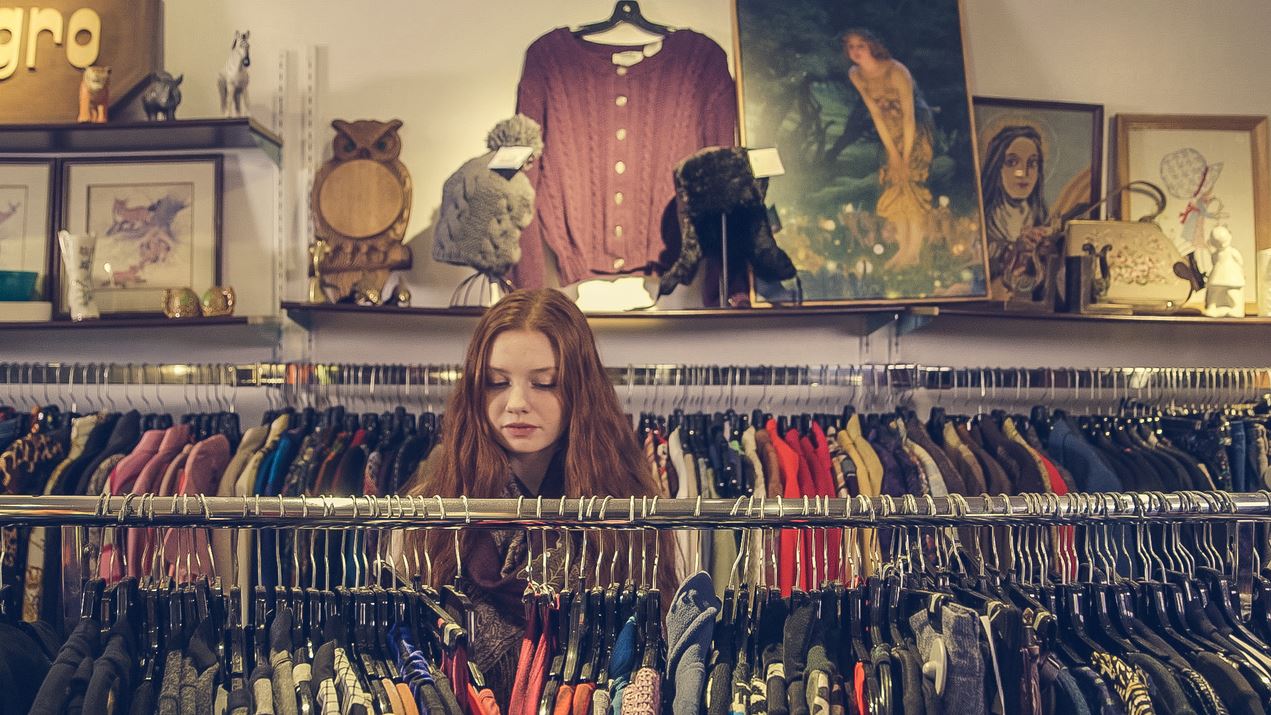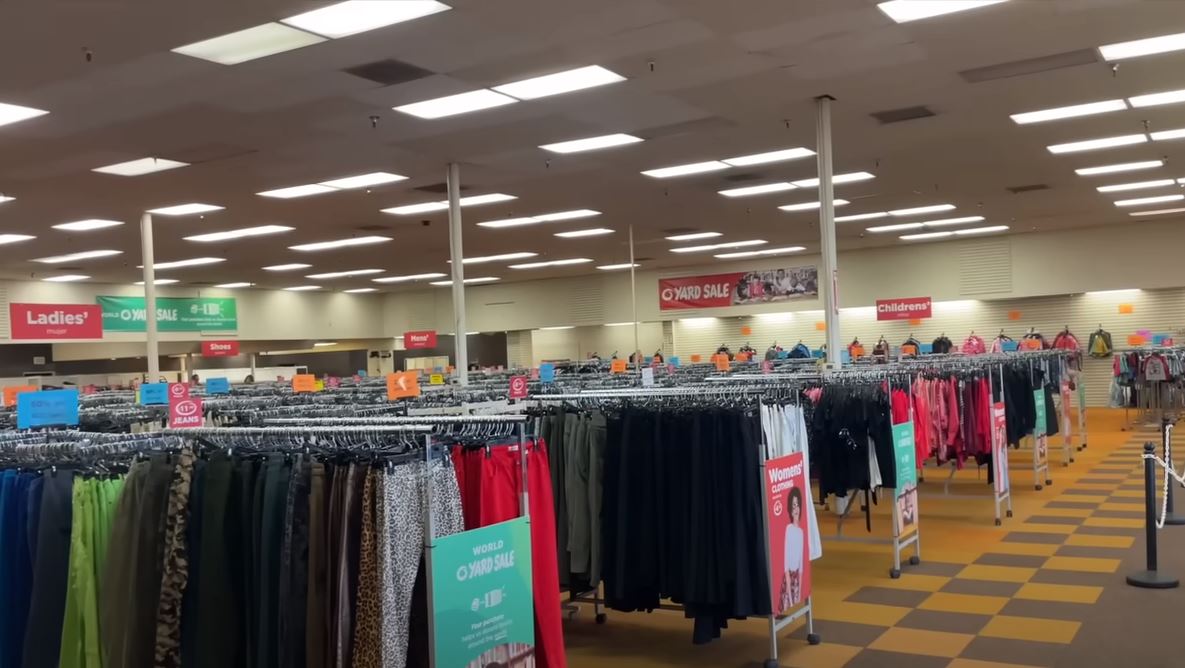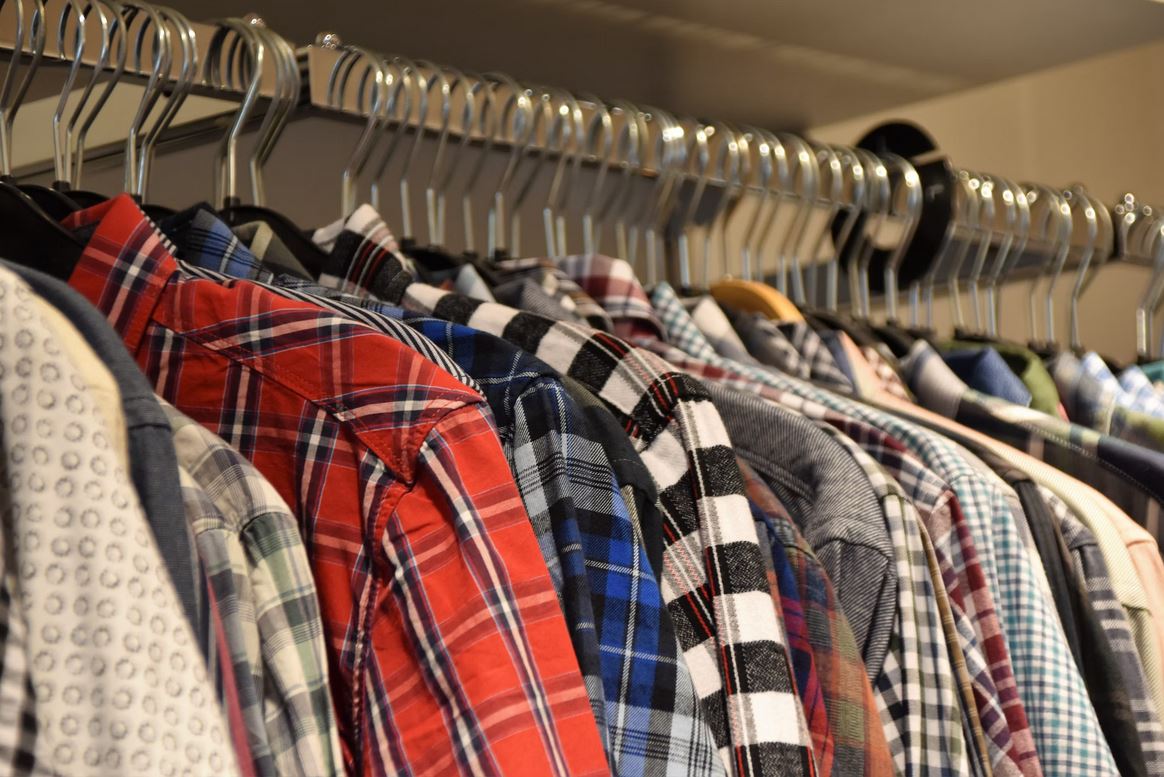What Is A Thrift Store? A Complete Guide With 9 Things to Know About Thrifting
Thrift stores are a type of retail store that has become widely popular in recent years. But what is a thrift store exactly?
At its core, a thrift store is a retail store that sells previously owned merchandise, primarily donated by individuals and organizations. The goods are sold at highly affordable prices, making thrift stores a budget-friendly shopping destination.
Thrift stores go by many different names, including secondhand stores, charity shops, consignment stores, resale shops, and more. But they all share that common element of selling gently used donated items to provide bargains to shoppers and raise funds for a good cause.
Let’s dive into a comprehensive guide to thrift stores, including their history, what you can find, how to shop, and the many benefits of thrifting!
Key Takeaways
In a nutshell, here are the key thrift store takeaways to remember:
- Thrift stores are treasure troves for scoring unbeatable deals on donated secondhand goods
- By shopping thrift you give new life to pre-owned items while supporting charities
- Each visit offers unexpected surprises since inventory is constantly changing
- Take time to search systematically and inspect for quality and hidden flaws
- Thrifting allows you to define your own eclectic style while being eco-friendly and helping your community
- Check donation schedules and go frequently since you never know what amazing finds you’ll uncover
Now get ready to unlock the many thrills of thrifting for your next bargain hunting adventure!
1. History of Thrift Stores
The thrift store concept originated with various charity organizations in the early 1900s. The Salvation Army opened its first thrift store in New York in the 1890s, while Goodwill launched their first store in 1902.
These faith-based nonprofits realized they could raise additional funds for their charitable causes by selling gently used donated goods. It provided an opportunity to help outfit the poor with affordable necessities while also generating revenue.
Thrift stores grew in popularity during the Great Depression in the 1930s as many struggled financially. By providing low-cost clothing and household items, thrift stores served a valuable role.
Goodwill and the Salvation Army greatly expanded their secondhand retail operations in the decades following World War 2. The counterculture movement of the 1960s also boosted interest in used clothing and unique vintage pieces.
Today thrift stores are more popular than ever! People love hunting for bargains and one-of-a-kind treasures. Thrifting has also gained appeal as an eco-friendly way to recycle used goods.
2. Differences Between Thrift Stores and Other Retail Stores
Thrift stores have some key differences from typical retail stores:
- Used merchandise: Thrift stores sell secondhand items donated by individuals, whereas regular retail stores sell brand-new mass-produced products.
- Affordable pricing: Items are priced low as thrift stores aim to serve budget-minded shoppers, unlike retail stores that markup prices to make a profit.
- Charitable mission: Most thrift stores are run by nonprofits and charities, so profits are used to fund good causes rather than going to business owners.
- Treasure hunt shopping: Browsing thrift stores is a unique treasure hunt as inventory constantly changes. At regular retail stores, the stock is consistent and predictable.
For these reasons, visiting a thrift store provides a completely different shopping experience than a regular big-box retailer! Thrifting takes dedication but can yield amazing finds.
3. Types of Thrift Stores
There are several categories of thrift stores to be aware of:
Charity-Run Thrift Stores
Many thrift stores are operated by charitable organizations like Goodwill, the Salvation Army, and local church and community groups. These nonprofits use profits to fund employment programs, rehab centers, homeless shelters, food banks, and more.
Non-Profit Thrift Stores
Some thrift shops are run by non-religious nonprofits like Habitat for Humanity and Ronald McDonald House. These still support community programs with their earnings.
Consignment Stores
Consignment shops focus on higher-end secondhand apparel and goods. Rather than donations, they sell items on consignment, earning a percentage of the sale price. Goods tend to be more selective and prices are higher than donation-based thrifts.
Vintage and Antique Stores
These thrift stores specialize in older rare collectibles, antiques, and curated vintage pieces rather than the average donated items. Prices reflect the higher value of these specialty goods.
Thrift Store Chains
Some of the largest thrift store networks include Value Village, Savers, Deseret Industries, and Buffalo Exchange. These operate multiple locations on a for-profit business model.
4. What You Can Find at a Thrift Store
The range of products available at thrift stores is extremely diverse since inventory depends entirely on what folks in the community donate. Here are some of the top categories:
Clothing
- Every type of clothing imaginable – shirts, pants, dresses, suits, coats, shoes, accessories, undergarments, swimwear, costumes, uniforms, and more!
Home Goods & Furniture
- Furniture like couches, chairs, tables, desks, dressers, beds, and shelves
- Home decor including vases, pictures, lamps, rugs, curtains
- Kitchenware such as glassware, utensils, pots, pans, appliances
- Linens like blankets, sheets, towels, tablecloths
Media
- Books, magazines, comics, records, CDs, DVDs, VHS tapes, and video games
Toys & Games
- All kinds of toys, stuffed animals, dolls, board games, puzzles, playing cards, etc.
Sporting Goods
- Sports equipment and gear for football, baseball, hockey, basketball, soccer, camping, fishing, and more
Jewelry
- Necklaces, rings, bracelets, earrings, watches, brooches, cufflinks, etc.
Technology
- Electronics like TVs, stereos, computers, phones, cameras, printers, DVD players
Collectibles
- Antiques, vintage items, memorabilia, trading cards, stamps, coins, fine art
The great thing about thrift stores is the chance of coming across weird one-of-a-kind objects that you would never find at a typical retail store. Thrifting takes an open mindset and curiosity to uncover hidden gems.
5. Benefits of Shopping at Thrift Stores
Why should you consider thrifting for things you need instead of traditional retailers? Here are some excellent benefits that thrift stores offer:
Save Money
The number one reason to shop thrift is to score amazing deals. You can often buy clothing, furniture, household items, and more for 90% less than the retail price. Even designer brands can be found at huge markdowns compared to boutiques. With a little thriftiness, your dollar goes a lot further.
Recycle and Reuse
Shopping at thrift stores keeps used goods in circulation and out of landfills. By purchasing and repurposing pre-owned items, you promote sustainability and conserve resources.
Find Rare and Unique Items
Thrifting is the perfect venue to uncover one-of-a-kind wares and hidden treasures. Vintage clothing, antique decor, collectorsâ€TM items, and oddities offer discoveries you won’t stumble upon elsewhere.
Support Charitable Causes
Money spent at charity-based thrift stores directly helps fund programs supporting communities. You get amazing deals on top of knowing your dollars benefit people in need.
Express Personal Style
Putting together unique fashion looks or designing your home with an eclectic aesthetic is easy and affordable when thrifting. You can define your own style on a budget.
Low Financial Risk
You aren’t spending much per item when thrifting so there’s little risk if something ends up not working out. This makes it ideal for experimenting with clothes, furniture, hobbies, crafts, and decor ideas on a budget.
6. How Thrift Stores Price Items
Pricing at thrift stores involves more art than science! There are several factors thrifts take into account:
- Brand: Higher prices for recognized brands and designer labels.
- Condition: Items in like-new shape go for more than well-worn goods.
- Age: Vintage and antique pieces often cost more than modern.
- Rarity: One-of-a-kind and unusual items have premium pricing.
- Demand: Seasonal and trendy goods may be priced up.
Of course, pricing also depends on the individual thrift store’s business model. Some aim for maximum profits while others focus on keeping prices low for the community.
To give you a sense of typical pricing, here are some averages:
- T-shirts $2-$5
- Jeans $5-$10
- Shoes $10-$20
- Dresses $10-$20
- Blazers $10-$20
- Sofas $50-$150
- Coffee tables $20-$60
- Kitchen appliances $20-$60
- Books $1-$3
- Video games $5-$10
High-end brands and rare collectibles will skew towards the upper end while basic everyday items will be at the lower pricing.
Thrifts also regularly run sales, especially around holidays. The most common is 50% off certain color tags. So patience and timing can pay off for additional savings!
Negotiating Prices
Don’t be afraid to negotiate, especially for higher-priced goods. Many thrifts will work with you if you make a reasonable offer and a polite case. Just avoid haggling over smaller standard items.
7. How To Shop at Thrift Stores
While secondhand shopping is fun, it does take some strategy and inside knowledge to master thrifting. Apply these tips for success:
Check Donation Schedules
Since thrift stores constantly turnover inventory, it helps to know when they stock new items. Many receive the bulk of donations on weekends and will spend Monday processing new arrivals and restocking shelves.
Look Systematically
Thrift stores are organized chaos. Take time to scan through the entire shop section by section without missing any spots. Easy to overlook hidden areas near floor level and up high.
Inspect Items Closely
Carefully examine anything you’re considering purchasing. Check for flaws, damages, stains, missing pieces, functionality, etc. Most thrifts have no return policies so you want to verify the condition.
Be Open-Minded
Let go of any preconceived notions about the types of items worth buying secondhand. Some of the best thrift scores are the unexpected. Take a chance on unusual pieces that speak to you.
Go Frequently
With inventory constantly changing, the more often you visit the better your odds of finding hidden treasures. Make a habit of stopping by your favorite thrifts regularly.
Time Discount Days
Many thrift stores run big sales on certain days like 50%-off Mondays or color-coded tag discounts. These are ideal times to score even better deals.
Bring Cash
While most thrifts accept credit cards, having cash allows you to negotiate prices on the spot and avoid sales tax. Keep a stash of bills on hand specifically for secondhand shopping excursions.
Understand Return Policies
It’s quite rare for thrift stores to allow returns or exchanges since inventory is always shifting. Know that purchases are typically final sales.
8. How To Donate to Thrift Stores
The other side to shopping thrift is donating your quality used goods back to the stores. Keep a few pointers in mind:
- Check the website or call to find out what each thrift accepts and their hours for dropping off.
- Only donate clean gently used items in good working order. Throw away any garbage.
- Clothing should be washed, ironed, and on hangers.
- Box up household items securely so they don’t break.
- Bring donations into the store. Don’t just leave bags outside.
- Get a receipt for your donation if you plan to claim the tax deduction.
9. Benefits of Donating Goods
Decluttering your house? Instead of trashing items consider donating to charity thrifts that benefits you and your community.
- Keep reusable goods out of landfills and waste systems
- Fund great causes like employment programs, shelters, and food banks
- Provide affordable shopping options for low-income families
- Earn tax deductions for qualifying charitable donations
- Quickly and easily clear out unwanted household items
So both shopping and donating to your local thrift stores help worthwhile causes while scoring deals!
Popular Thrift Store Chains
If you’re new to thrifting, some popular nationwide thrift store chains to check out include:
Goodwill
Goodwill Industries is one of the largest and most recognizable thrift organizations. They operate over 3,000 stores across the US and Canada. Goodwill uses profits to fund employment training and placement programs for people with disabilities and disadvantages.
The Salvation Army
A long-running international charitable group, The Salvation Army operates over 130 thrift stores in the U.S. Earnings help support their adult rehabilitation centers that provide treatment programs.
Habitat for Humanity ReStore
ReStores are thrift outlets that accept donations of home goods and building materials to support Habitat for Humanity’s mission of affordable housing. They have nearly 1,000 U.S. locations.
Value Village
Value Village is a for-profit thrift chain with over 300 stores. Though not a charity, they do partner with non-profits and make product donations. Their massive volume of locations makes Value Village a go-to for thrifters across the U.S. and Canada.
Savers
Another large for-profit thrift chain with close to 300 stores. Savers call themselves a “recycling superstore” supporting programs that help community growth. They distinguish themselves from large-scale thrift departments.
Deseret Industries (D.I.)
D.I. is a Mormon church-operated chain of over 45 thrift stores across western U.S. states. Proceeds provide career development, training, and counseling. The D.I. shops are known for their strict merchandise quality standards.
Thrift vs Consignment Stores
Thrift stores are often confused with consignment shops. While there is overlap, some key differences include:
- Business Model: Consignments split profits with the item owners while thrifts redistribute profits as charity.
- Merchandise Source: Consignment only accepts high-end, top-quality goods vs thrifts take all donations.
- Pricing: Consigned goods sold at higher prices more in line with retail vs super affordable thrift pricing.
- Shoppers: Consignment stores attract more bargain and fashion hunters vs a broad thrift demographic.
Both offer great secondhand deals so it pays to explore all the options in your area. High-end consignment can yield designer brands for less while thrifting has greater price discounts on an unpredictable array of goods.
Thrift vs Antique Stores
At a glance, antique stores may appear similar to thrift shops but deal in distinctly different merchandise:
- Age: Antique inventory consists of items at least 50-100 years old while thrifts carry both vintage and modern goods.
- Pricing: Because of their age and patina, antiques warrant higher prices than typical used thrift wares.
- Condition: Antiques are purchased for their worn finish vs the preference for like-new condition at thrift stores.
- Specialization: Antique sellers have expertise that allows them to cater to niche collectors. Thrift stores offer broad assortments.
But don’t rule out thrift stores for finding some amazing antiques and collectibles when you take the time to hunt!
Thrifting for Vintage Fashion and Decor
For vintage lovers, thrifting is a goldmine for curating your dream retro wardrobe or mid-century modern-inspired home. Here are some tips:
- Inspect clothing closely for flaws, checking seams, fabric condition, stretching, stains, etc. Watch for signs of excessive wear.
- Feel out the quality and fabric content of older garments since natural fibers like cotton and wool last better over time.
- Avoid musty smells which can be difficult to remove from vintage clothes.
- Search furniture sections for classic silhouettes and natural wood pieces popular in past eras.
- Look for quirky conversation-starting accessories like ashtrays, lamps, telephones, and radios.
- The condition of any vintage finds should match the price. Well-preserved deserves higher pricing.
Building a distinctive vintage style through thrifting takes patience but ultimately costs a fraction of what vintage boutiques charge!
Finding Valuable Collectibles at Thrift Stores
With a good eye, persistence, and a bit of luck, you can discover previously unnoticed thrift store treasures worth far more than their bargain-bin pricing. Categories to check include:
Jewelry: signed costume pieces, antique sets, charm bracelets, cocktail rings, Native American silver, bakelite
Artwork: paintings signed by recognized artists and limited edition prints – verify signatures
Electronics: classic games systems, vintage turntables and stereos, legacy Apple products, boxed toys
Sports Memorabilia: cards, pennants, jerseys, autographed gear can be big scores
Research items that catch your interest. Warning signs of valuable goods include quality materials, brand markings, limited editions, and craftsmanship. But don’t get caught up in imaginary big paydays – value what you personally love. Happy thrifting!
What is a Thrift Store – Final Remarks
I hope this complete guide provides you with a helpful overview of the wonderful world of thrifting – understanding what thrift stores are, the great bargains they offer, and how to unlock their treasure trove of pre-owned goods.
Thrifting allows you to spend less, find rare items, support communities, go green, and define your own eclectic style. You never know what surprising gems your local thrift holds on any given day. So break out of the retail mindset, get comfortable digging for deals, and open yourself to serendipity!
The next time you need something new, consider checking out a thrift store before hitting the mall. With an open mindset and spirit of adventure, thrifting can become a rewarding hobby as you uncover surprising treasures while benefiting charity. Now get out there and start thrifting!
Frequently Asked Questions About Thrift Stores
What exactly is a thrift store?
A thrift store, also called a charity shop, is a retail shop that sells pre-loved donated items at rock-bottom prices. Inventory comes from community donations and all profits support a greater cause.
What can you find at thrift shops?
Thrifts are a treasure chest of practically anything used—clothing, furniture, homewares, media, collectibles, antiques. The fun is uncovering unexpected surprises on each visit since stock continually changes.
How are thrift store prices so low?
As non-profits, thrifts aim for affordable prices to help the community. Donated items means no manufacturing costs. Plus discounts for flaws and wear make prices a fraction of retail.
Are thrift store items used or new?
Previously owned goods donated by individuals make up 99% of thrift inventory. But occasionally new leftover stock, customer returns, or unsold goods from businesses wind up on thrift shelves too.
How often does thrift store merchandise change?
Most thrifts restock regularly as donations come flooding in daily, so selection evolves continually. Check schedules to know peak days when new treasures get rolled out.
Is it safe to buy secondhand?
Inspect thoroughly for clean condition with no damage or flaws. Launder clothing before wearing. Take precautions for used furniture, toys, electronics. If unsure, leave it.
Can you negotiate prices at a thrift store?
Haggling is hit or miss depending on the thrift. You’ll have more luck making reasonable offers on higher-priced goods. Politely ask “What’s the lowest you’ll take?”
How do you find the good stuff thrifting?
Search systematically, touching every area. Scan up high and down low. Look behind and under. Let go of assumptions. Spend time digging. Check often for restocks. Persistence pays off!
editor's pick
latest video
news via inbox
Nulla turp dis cursus. Integer liberos euismod pretium faucibua




